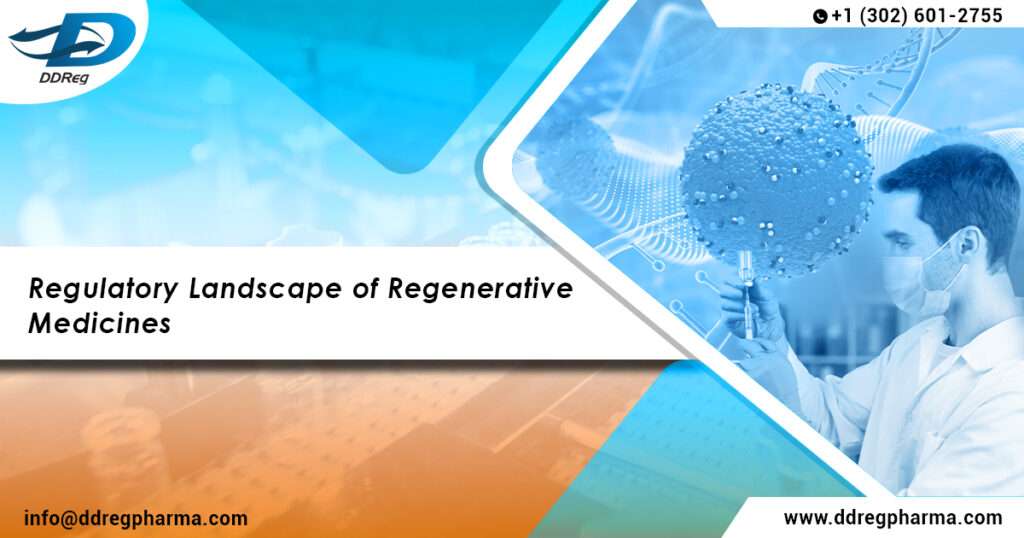Regenerative medicine is a field that has emerged as a new component of modern medicine/healthcare by introducing therapies that repair or replace damaged tissues and organs through innovative approaches, including stem cells, gene therapy, and extracellular vesicles. Having the potential to address medical needs, regenerative medicine also presents unique regulatory challenges given the lack of robust regulations and processes for relatively complex medicines. Regulatory authorities like the FDA have adapted existing regulatory frameworks to address these applications.
Understanding Regenerative Medicine
Regenerative medicine consists of a broad spectrum of therapies, including cellular and acellular treatments. These therapies utilize biological components such as stem cells, extracellular vesicles (EVs), and tissue-based products to promote repair, regeneration, and healing. The field’s rapid evolution requires regulatory bodies to adapt swiftly, creating frameworks that ensure product safety while fostering innovation.
Regulatory Approaches in Leading Markets
United States Food & Drug Administration’s Modular Framework
The U.S. Food and Drug Administration (FDA) employs with a modular approach to categorize human cell therapies and products (HCT/Ps) into three tiers based on risk factor-
Tier 1: Covers low-risk products, such as autologous transplants used in the same surgical procedure.
Tier 2: Includes minimally manipulated and homologous-use products, which are subject to moderate safety requirements.
Tier 3: Represents high-risk therapies requiring extensive clinical trials to establish safety and efficacy.
The FDA’s Center for Biologics Evaluation and Research (CBER) oversees the role of regulating regenerative medicine by ensuring compliance through guidance documents on topics like minimal manipulation and homologous use. The FDA’s 21st Century Cures Act further accelerated the approval process for Regenerative Medicine Advanced Therapies (RMATs), providing expedited pathways for innovative products.
Japan’s Conditional Approvals
Japan leads with rapid regulatory approvals for regenerative therapies by allowing conditional marketing after Phase 1 trials demonstrate safety. This approach has catered to innovation but raises concerns about long-term efficacy and patient safety.
European Union’s Rigorous Harmonization
The European Medicines Agency (EMA) adopts a harmonized regulatory framework through Advanced Therapy Medicinal Products (ATMPs). The EU ensures consistent oversight across member states by integrating strict safety measures and centralized evaluation processes.
Regulatory Challenges in Regenerative Medicine
Despite the advantages and potential, regenerative medicine still faces challenges like-
Complex Manufacturing and Quality Control- The inherent biological variability in regenerative products, such as stem cells and EVs, complicates standardization. Methods like flow cytometry and immunohistochemistry are used to ensure identity, purity, and potency, but these require further refinement to meet regulatory expectations.
Emerging Technologies– Innovations like gene-edited therapies and biogenic nanoparticles necessitate updated frameworks. For example, EVs are widely studied for their therapeutic potential, and face hurdles due to the lack of standardized characterization and storage protocols.
Ethical and Social Implications- Public perception and ethics are considered important for regulatory agencies to navigate the fine line between promoting innovation and preventing misuse by “rogue” operators offering unproven therapies.
Opportunities for Collaboration
The regulatory landscape benefits from international harmonization efforts, such as the International Council for Harmonization (ICH), which develops global standards for safety, efficacy, and quality. Collaborative initiatives like the FDA’s Centers of Excellence in Regulatory Science and Innovation (CERSIs) provide a platform for advancing regulatory science.
Conclusion
The field of regenerative medicine is progressing, and it’s crucial that the regulatory systems keep pace. It needs flexible frameworks that can adapt to new scientific breakthroughs while still prioritizing patient safety. The FDA is taking steps in the right direction with its focus on updating toxicology methods and tapping into real-world data. These initiatives show that regulators are thinking ahead and actively working to meet the challenges of this exciting field.
With the shift towards more innovative approaches in drug development and testing in the pharmaceutical landscape. The FDA’s efforts to modernize toxicology and use real-world data could lead to more accurate predictions of how new treatments will perform in humans. This could potentially speed up the drug approval process and bring life-changing therapies to patients faster.
DDReg Pharma specializes in providing tailored regulatory solutions to help you bring innovative therapies to patients worldwide. Reach out to our experts to discuss your regulatory needs. Read more from us here: Tackling Global Market Access Barriers in Pharma Regulation

